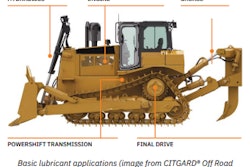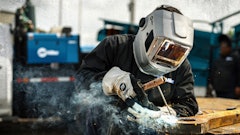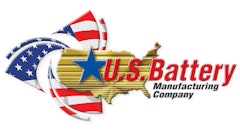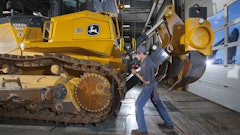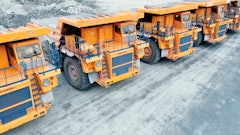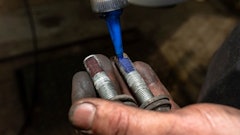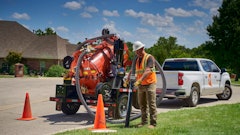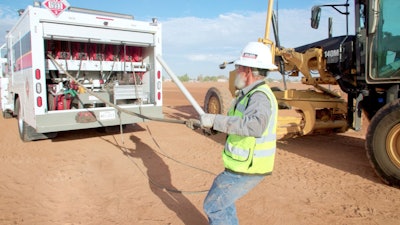
As summer heats up, so does the pace of construction across much of the country. That’s why June marks National Safety Month. As time frames become compressed and keeping machines running smoothly is a priority for profitability, lube technicians face constant pressure. Every minute of fleet downtime counts as operators depend on machines to be ready to roll each morning.
Operating safely in this environment requires careful preparation and the right tools. Working around heavy machinery demands constant vigilance. Fatigue contributes to careless mistakes. Slips and falls while getting on or off the equipment are a leading cause of injury. It’s important to review your mobile maintenance safety protocols to ensure lube technicians have the training, procedures and tools to remain safe and productive.
Don’t Hit the Road Without a Walkaround
The worst place to discover a problem is on the road. Before a lube technician rolls out of the shop, they need to take a few minutes for a daily walk-around of the lube truck and/or trailer. A pre-trip inspection is a CDL requirement for commercial trucks and should be documented. But it’s smart for techs transporting equipment of all sizes. Develop a list and routine to ensure critical items are not missed.
When a lube technician approaches the truck, they should look underneath for fluid leaks. Check lights, tires, bolts, couplings, visible suspension conditions, exhaust leaks and visible mechanical concerns. The most common mechanical reason that DOT inspectors place a commercial truck out of service is due to braking system-related items. This is followed by tires and wheels.
Gear up Before You Step Out
Before exiting the cab on the jobsite, a lube technician should have the appropriate personal protective equipment (PPE). This may vary according to the jobsite. Commonly used PPE for lube technicians on construction sites includes:
- Hard hats to protect the head from potential impact hazards
- Gloves to protect hands from prolonged motor oil exposure
- Safety glasses to protect eyes from debris and oil splashes
- Long sleeves or coveralls to minimize exposure to hot surfaces and oil spills
- Sturdy boots to provide good traction and protect the feet
- High-visibility clothing to help drivers see the tech while they work near traffic
Follow Best Practices On-Site
Well-established safety practices can help prevent the most common injuries. When the equipment is parked, a technician must ensure it is properly secured with wheel chocks and that the parking brake is engaged. If possible, they should perform the oil change on level ground to prevent unintended machine movements.
When mounting and dismounting heavy equipment, techs should maintain three points of contact. This can be two hands and one foot or two feet and one hand. They should not jump off or onto heavy equipment.
Proper lock-out/tag-out procedures should be used. A technician should never walk or work under raised loader arms, buckets or blades.
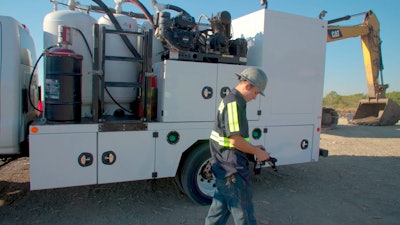 Sage Oil Vac
Sage Oil Vac
The Right Equipment Makes All the Difference
Using the right tools can completely transform how technicians approach oil changes, making the job faster, cleaner and safer. Working long hours with subpar tools slows the oil change process and unnecessarily fatigues the technicians.
For decades, heavy equipment oil changes were a labor-intensive process. Technicians spent hours on the ritual of removing oil plugs and catching the oil in a container. After removing the filter while attempting to minimize spillage, new oil was added, typically using a funnel.
This often required the technicians to crawl around — and even under — the machine to pull plugs, access filters and position themselves to pour oil from jugs into funnels. Technicians often worked near hot oil and carried heavy pails. Today’s mobile lube systems, such as pump-free systems, replace the antiquated practice of manually lifting heavy buckets or jugs and crawling around the machine when transferring bulk fluids to the equipment. They also relieve time-related stress by allowing the technician to service more machines every day.
Fleet size, the distance between jobsites, and fluid types and quantities needed for service all factor into the best fluid maintenance solution. You want to be able to carry all the fluids, filters and components necessary to perform service without multiple trips back to the shop. There isn’t a single solution that meets the needs of every preventive maintenance program. That’s why some OEMs offers a full line of lube trucks, skids and trailers to help meet the unique needs of customers. Seek expert advice to match maintenance demands with an optimized mobile lube solution.
Minimize Exposure to Oil and Noise
For lube technicians, managing oil temperature is crucial. They should never perform "cold" oil changes, regardless of the weather outside. Oil should always be warm, so it flows freely and drains completely.
The engine should be started and warmed up to normal operating temperature to circulate the oil before the oil is changed. Technicians can also perform the oil change shortly after the equipment has been shut down for the day. Running the engine immediately before an oil change also helps ensure better removal of contaminants from inside the engine. Contaminants from wear, the combustion process and the environment are suspended in the oil when the machine is working.
Using a fluid exchange system protects your technicians from hot oil exposure and reduces manual effort. Less physical effort means more productive technicians.
Used motor oil contains various chemicals and impurities that can be absorbed through the skin. Prolonged skin contact with used motor oil should be avoided since it can lead to skin irritation, dermatitis and even skin cancer. Fluid exchange systems help minimize contact.
Many conventional fluid exchange systems rely on a continuous supply of air to drive the diaphragm or air piston pumps on their tanks. This exposes the lube technician to constant noise. A unique differentiator of pump-free technology is that uses a vacuum system that reduces air compressor run time by up to 70%.
Stay Clean and Vigilant
Reducing exposure to used oil and noise while simplifying the oil change process goes a long way toward improving lube technician safety. Driving and working around heavy equipment while fatigued contributes to preventable accidents. Choosing the right tools creates a better working environment for valued technicians so they can be much cleaner and less fatigued at the end of the day.






